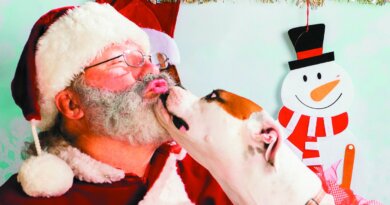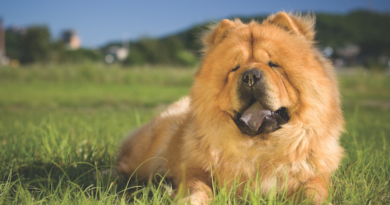Yorkshire Terrier Dog Breed Profile – Top Dog Tips
The enthusiastic Yorkshire Terriers or Yorkies are members of the toy breed and are one of the most miniature dog breeds.
The Yorkshire Terrier is currently the 10th most popular dog in the United States and is one of the cutest dogs to exist!
Yorkies are naturally curious, intelligent, and very lively. So, there’s never a dull moment if there’s a Yorkie in your humble abode.
Yorkshire Terriers tend to be very loud, protective, and loyal. Despite their tiny structure, they can make excellent guard dogs!

Yorkies can be an excellent companion to be with who loves to cuddle and be taken care of by their loved ones.
So, if you’re looking for a dog that is small in size but with an aggressive attitude and a sophisticated look, then a Yorkshire Terrier is the right choice for you!
Significant Characteristics of Yorkshire Terrier
Yorkshire terriers are very affectionate towards their family. But like a dog from a terrier lineage, they can be suspicious to strangers and bark at unusual sounds and intruders.
They can be aggressive towards stranger dogs and squirrels.
Yorkies are also highly territorial!
They will defend everything that they perceive as their own. This territorial trait can lead to more barking than any other breed.
Aside from being aggressive, Yorkies have a soft side, too!
They can be needy of attention and time with their family, so long hours of leaving them alone will not be a good idea.
Yorkie Terriers are not hyper dogs, but just like any dogs, they also need exercise to burn off energies and avoid behavioral problems.
They can already get a good deal of exercise by just trotting around the house and playing.
It’s also essential to take them out for daily walks as this can provide mental stimulation to help ease boredom.
Size
Adult Yorkshire Terriers can grow from 7 to 9 inches at the shoulder and weigh 4 to 7 pounds.
This makes them one of the most miniature dogs in the world.
Yorkies are inconsistent with their size. It’s not unusual that one Yorkie weighs less than 4 pounds, some weigh 5 to 6 pounds, and others can weigh up to 15 pounds.
Interesting Note: Male Yorkies can be larger than the female Yorkies

Physical Characteristics
The Yorkshire Terrier is a toy-sized dog. It has a neat, compact, and well-proportioned body.
Its small head is flat on the top with a medium-sized muzzle and black nose. Its teeth are on a level bite.
Yorkie’s medium-sized eyes are dark with black rims. Its ears are V-shaped.
All four legs are straight when viewed upfront with round feet and black toenails.
Its tail is docked to a medium length and carried higher than the back.
Interesting Note: It is illegal to dock tails in most parts of Europe.
The glossy coat is long, silky, and perfectly straight, with no hint of curls. It has a single coat and sheds very little.
Yorkshire Terrier puppies are born black with a blue and tan coat that develops gradually, usually after a year old.
Yorkie puppies that start to lighten color before one year have a possibility of turning gray rather than blue.
From the back of the head to the tip of the tail, the hair is a dark blue with a bluish sheen when struck by sunlight. The head is a bar of bright gold with tan hairs that are darker at the roots and lighter at the ends.
The hairs are darker at the bottom of the ears and on the muzzle. Yorkies also have tan legs, but the tan doesn’t extend up to the elbow.
A fascinating fact about a Yorkie is they can become lighter in color as they age. Hormonal changes are a factor in the changing colors.
Female Yorkshire Terriers in heat tend to go lighter and go back to dark color as the season is over.
Yorkshire Terrier’s Personality and Temperament
Although small, Yorkshire Terriers have the heart of a lion and are a big ball of energy!
They have a high prey drive and will chase anything in their sight, especially if it resembles a rodent.
They are very eager for adventure!
Their energies, combined with their easy-going personality, make them well-balanced dogs suited for family lifestyles.
Yorkies are also relatively chill in their homes and will take partial naps in the afternoon.
They are very affectionate and can be happy by just sitting in your lap all day.
Since Yorkshire Terriers come from a terrier heritage, they can be stubborn, cheeky, tenacious, and bossy at times. If left being untrained, they can be too much to handle.
These personalities make them an excellent watchdog!
They’ll bark at anyone who approaches their family or house. This is an excellent trait if you are looking for a dog that can alert you anytime.
At first, they can be aloof with strangers, but they can quickly outgrow it when they find these people trustworthy.
Yorkshire Terriers are very family-oriented and can experience separation anxiety when being stripped off from their human pack for a long time.

Feeding a Yorkshire Terrier
A Yorkshire Terrier only needs two meals per day containing 1/2 cup of dry dog food, preferably during day and night only.
Avoid sharing your food with him since this breed is known to experience digestive problems such as vomiting and diarrhea.
Giving treats to your Yorkie frequently might lead to obesity. This causes him to have a shorter lifespan.
Be conscious of your Yorkie’s physical shape. Don’t let him get too fat because many rolls are not suitable for this great breed.

Proper Grooming for Yorkshire Terrier
If you keep your Yorkie’s coat short, it’s best to brush it every day to prevent tangles gently.
Small breeds like the Yorkies are prone to dental health problems. They have the tendency to form a lot of tartar and can lose their teeth at a young age, so frequent brushing of their teeth is a must!
Also, check your Yorkshire Terrier’s ears! Look inside them and check if they smell good.
If there is fur in the ear canal, pluck it out using your fingers or simply ask your groomer to do so.
Bath your Yorkshire Terrier once a week to keep his coat beautiful and shiny. Just apply the shampoo onto his wet jacket and run your fingers to remove the dirt, apply conditioner, and rinse him thoroughly.
As you dry and brush your Yorkie, could you give him a spray of light conditioner?
Note: Never brush their coat when dry or dirty as this can cause breakage!
After brushing and drying, collect the hair on top of his head, brush this hair up, and fasten it with a latex band. Finish it by attaching your favorite bow to it.
Also, trim your Yorkshire Terrier’s nails after each bath to avoid any problems caused by long nails.
Just like any dog breed, Yorkie’s nails have blood vessels, and if you cut too far, you might cause him to bleed – he may not want to cooperate with your nail cutting session next time.
If you’re not experienced enough to trim down his nails, take him to the nearby groomer.
Check also his anal area and trim down the coat around it using a scissor. About half an inch of fur around it should be enough.
Train your Yorkshire Terrier puppy to be accustomed to trimming and other hygiene regimes and make hygiene practices a fun experience by giving him treats as rewards.
With that, all the veterinary exams will be easy as he reaches adulthood.

The Lifespan of a Yorkshire Terrier
Yorkshire Terriers can live long enough if given the proper health care such as regular vet visits, complete vaccinations, good nutritional food, moderate exercises, and grooming.
The average life expectancy of a Yorkshire Terrier is 12 to 15 years. However, some may live up to 18 years.
Many Yorkies live a healthy life, but they are not exempted from experiencing the following diseases:
- Patellar Luxation: This is the loosening of the kneecap that results in dislocation. Typically, the knee can pop back to its place, but some may need surgery due to its severity.
- Collapsing Trachea: Yorkshire Terriers are prone to this condition and can get worse with age. They may display chronic cough.
- Progressive Retinal Atrophy (PRA): A degenerative eye disorder. The blindness caused by this disease is a slow process that results in the loss of photoreceptors at the back of the eye. It can take up to years before a Yorkshire turns blind.
- Portosystemic Shunts (PSS): This involves a defective blood flow between the liver and the body. This is usually detected before two years old and can be lessened by surgery and diet.
- Intervertebral Disc Disease: Herniated discs in the back can be the result of an injury.
- Hypoglycemia: Yorkies can suffer from this when stressed, most especially when they are puppies. This is caused by low blood sugar. Its symptoms may include Weakness, Confusion, Wobbly walking, and Seizure-like episodes.
- Reverse Sneezing: This is a less severe condition and lasts only for a few minutes. This occurs when a Yorkie is excited or tries to eat or drink too fast. Secretions from its nose drop onto its soft palate, causing a closing over its windpipe as an automatic reaction. This can be frightening to him, so gently stroke their throat to relax him.
To get a healthy Yorkshire Terrier puppy, never buy from a puppy mill, pet store, or an irresponsible breeder.
Look for a reputable breeder who makes sure that their Yorkies are free from any hereditary diseases.

Living Arrangements for Yorkshire Terrier
A Yorkshire Terrier works well in an apartment living due to their small size. They are not lazy dogs. They need regular exercise.
Daily walks keep a Yorkie healthy and happy, though many of them love to run and play in addition to strolling with their owner.
Just make sure to monitor your Yorkie’s behavior on and off the leash as they can pick up fights with other dogs regardless of their size.
The yards and fences need to be Yorkie-proof to avoid escaping as they can slip through the gaps and holes when they are up to chase something.
Yorkshire Terriers don’t suit well with extreme temperatures, whether hot or cold. They do best in temperate climates and indoors.
Take them for a walk in the coolest time of the day for hot weather and provide a sweater during cold weather.
Yorkshire Terriers with Children and Other Pets
Due to their small structure, Yorkshire Terriers are not suitable for families with young children. Most Yorkie breeders won’t sell the Yorkshire Terrier puppies to people with children that are younger than 5 or 6 years old.
Children often mishandle Yorkies because they can quickly drop them, step on them, and squeeze them so tightly.
Yorkshire Terriers can get along with other pets, including cats if they socialize with them early.
They are courageous to go against strange dogs, even those who outweigh them ten times more, and this is why Yorkie owners are very protective of them.
Yorkshire Terrier History
Due to the Industrial Revolution in England, Scottish workers came to Yorkshire to earn a living in the coal, mines, textile, mills, and industrial factories.
They were bringing a dog known as Clydesdale Terrier or Paisley Terrier.
The Clydesdale Terrier was guessed to be a crossbreed of other types of terriers. Perhaps an English Black and Tan Toy Terrier with the Skye Terrier.
The Origin of Yorkshire Terrier
The Yorkshire Terrier originated from the English town of Yorkshire. It was believed to be a descendant of the Waterside Terrier, which shared the same characteristics as the Terriers we know today.
The Waterside Terrier was small and had a long, blue-colored coat.
Other breeds that most likely contributed to the development of Yorkies include Manchester and Skye Terriers and possibly a tiny Maltese.
Aside from their noble looks, Yorkshire Terriers had some unglamorous background. They were produced to be working dogs, and their foremost duty was to catch rodents in cloth mills to save the cloth from being destroyed.
One fun fact for this is they are a bit bigger than the Yorkies we know today. They were gradually bred to size down to become fashionable pets.
Official Recognitions
For a long time, they have been known as Scotch Terriers. The Yorkie’s name officially became the Yorkshire Terrier in 1870.
The breed was then recognized in 1885 by the American Kennel Club and was allowed to compete in AKC licensed shows in 1878.
They are also recognized by other kennel clubs across the world, including:
- The Kennel Club (in Great Britain)
- Fédération Cynologique Internationale
A Yorkie of a Different Color
In 1984, a parti-color Yorkie puppy was produced by breeding Gertrud and Werner Biewer of Germany. Due to a recessive gene, this puppy turns out to have a white cast on its chest, legs, and belly with typical Yorkie coloring on the rest of the body.
The breeders found this puppy attractive and established a line that could consistently produce the piebald type.
They were successful and gave this new line a name, “Biewer Yorkies.”
Until today, many breeders are still breeding Biewer as long as there are at least three generations of pure Biewer behind a litter.
Although some breeders still crossbreed Biewer with Yorkshire Terriers, this kind of breeding is often disagreed with by many because the color requirements for a Yorkie are particular.
Aside from the difference in their colorings, Biewer are still Yorkies.
Different Types of Yorkies
- Huddersfield Ben – A top show dog and was considered the top dog of his era. He has been credited with possessing the characteristics found in the Yorkies today.
- Sylvia – An English Yorkie owned by Arthur Maples. It was recognized as the smallest dog ever existed, weighing 4 ounces, with a height of 2.5 inches and 3.5 inches long.
- Ch. Ozmilion Mystification – The first Yorkie breed to win Best in Show at the prestigious Crufts dog show in 1997.
- Ch. Cede Higgins – The only Yorkie who won the Best in Show at Westminster in 1978. This is according to the Westminster Kennel Club records.
Getting a Yorkshire Terrier
Adoption
If you are thinking of adopting a Yorkshire Terrier, you may want to contact these respectable organizations:
- The Yorkshire Terrier Club of America
These organizations will provide you with the basic knowledge, guidance, and other options in adopting a Yorkie.
If you’re still hesitant about owning a Yorkie, you might want to try fostering one to test if a Yorkie is fit for your lifestyle.
Through a Trusted Breeder
If you’re one of those many looking for a purebred, a dog’s descent must be recorded by a recognized breed registry.
The American Kennel Club (AKC) is known to be the strictest and most well-recognized registry.
The average price for purebred Yorkshire Terrier puppies is from $300 to $10,000. The price depends on their bloodline and if they have AKC papers.
You also need to remember that some puppies will require a non-refundable deposit of $200 to $500 to place the puppy on hold. You may not include this deposit in the final sale price.
These Yorkshire Terrier puppies will come with documented papers, vaccination records, a pedigree line, and a health clearance.
The breeder also has the health record for the puppy’s parents and can provide proper documentation that both parents have been professionally tested to breed out genetic diseases.
Breeding Yorkshire Terriers
Yorkshire Terriers have small litters because of their size. Their puppy count will range from 2 to 5 puppies, and the average is four puppies.
The number of puppies will include stillborn and the ones that died after birth. The mortality rate for Yorkies that are under 4 pounds is very high.
The Yorkshire Terrier puppy that dies after birth sometimes experiences low blood sugar.
Also, these puppies need to be observed if they are being breastfed. If a puppy is not nursing well, he might experience hypoglycemia.
Breeders must then provide a high-quality puppy formula.
If you are a first-timer in breeding Yorkshire Terriers, you must prepare your emotional well-being. Veterinary bills that are not covered by the dog insurance policy will also intervene.
Is the Yorkshire Terrier What You’re Looking For?
If you think that the Yorkshire Terrier is the best fit for you, visit trusted rescue shelters or breeders so you will have a chance to know this breed better.
You may want to visit the Yorkshire Terrier Club of America for more information on choosing the best Yorkshire Terrier puppy, and they can also give referrals to legit breeders.
If you would prefer to adopt than shop, visit the Yorkie Rescue website to learn more about adoption processes.
READ NEXT: Best Dog Food for Yorkies: How & What to Feed Yorkshire Terriers?
Related








zestril https://lisinopril.auction/ buy lisinopril online no prescription